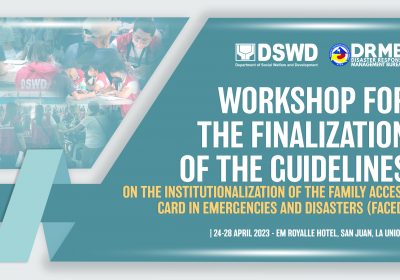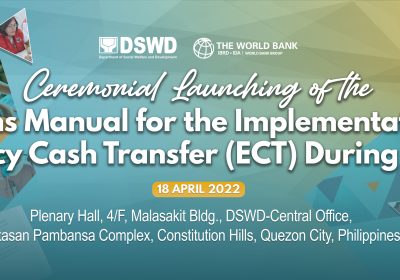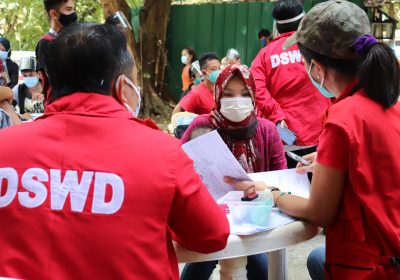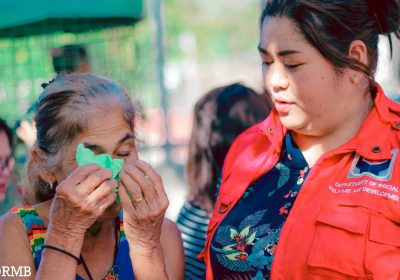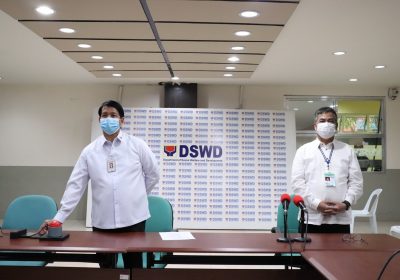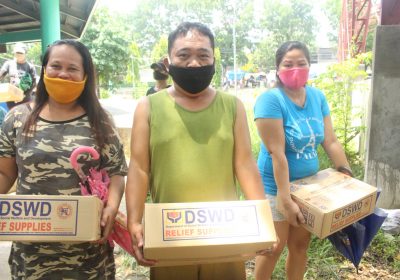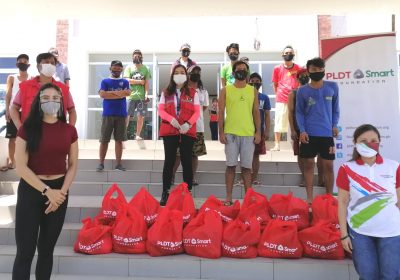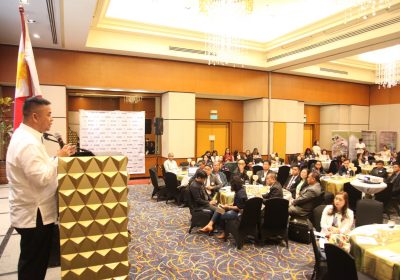EXECUTIVE SUMMARY
The Department of Social Welfare and Development through the Disaster Response Assistance and Management Bureau organized a Disaster Response Strategic Planning Workshop from June 27-30 2016 at Seorabeol Grand Leisure Hotel, Waterfront Road, Subic, Olongapo City. The event was attended by the representatives from DSWD Field Offices.
Ms. Jessica Dator-Bercilla of Christian Aid Philippines was the main facilitator of the activities together with the help of the Bureau Directors and Staff. The workshop was focused on crafting its Vision and Strategies and developing the Disaster Response Agenda. It was started by an introductory session by getting-to-know activity, review of the current roles of DReAMB and the Internal, External, Challenges and Opportunities in DSWD’s current mandates in the prevention and mitigation, preparedness, response and rehabilitation and recovery work.
The DSWD Disaster Response Agenda was presented by the DReAMB Director, Felino O. Castro V to the participants. He stressed out that climate change adaptation and mitigation is closely linked with our work in DReAMB because we need to be actively engaged in this task. He also emphasized the importance of pushing the cluster approach in our response because no single organization has a monopoly of resources. In addition, the difference between Hyogo and Sendai Framework for DRR was also discussed. Furthermore, DSWD Roles and Responsibilities were also tackled during the presentation and highlighted that DSWD is the Vice Chairperson for Disaster Response and as the cluster lead in CCCM, FNI, IDP Protection and as active member of other clusters but the focus is on the CCCM because all our 3 tasks as lead are confined within the CCCM. The Disaster Response Operations Guidelines of DSWD was also presented in the agenda.
START Network was also present to discuss the “Evolving Developments in Disaster response and DRRM Interventions” and the “Pilot Consortium Project on Transforming Surge Capacity” through Ms. Alexandra Pura, the National Program Coordinator of START Network. She emphasized the ability to scale up resources to respond to an emergency with the inclusion of getting the right people, to the right places, doing the right things in the shortest time possible to meet the urgent needs of disaster affected people.
Director Felino O. Castro V also presented the DReAMB Milestones from 2010-2016 to let the participants have the Historical Analysis based on the rich experiences of the Bureau.
Christian Aid Philippines through Ms. Jessica inserted a presentation about the Science of DRR: Dissecting Disasters. She discussed the archipelagic nature of the Philippines and gave emphasis on the need to know the typhoon paths, radius/diameter in order to be prepared and these information will help us towards preparation and mitigation measures and the goal of RA 10121 was also mentioned.
Mr. Lawrence Anthony Dimailig, the DROMIC Project Development Officer discussed the Predictive “Analytics for Disaster Response” and the Mr. Benedict Fernandez, Information Officer and Ms. Tricia Topacio, Planning Officer shared their presentation regarding the “Alternative Tools in Communication: How to Use Google Drive and Twitter”. The participants learned a lot from the tools that were introduced to them for effective and efficient communication. Vision Statement of Disaster Response Assistance and Management Bureau was also presented by the participants through the workshop.
VISION STATEMENT
“Committed to become the world’s standard in the promotion of a safe and resilient Filipino Society, we envision a DSWD that provides timely, inclusive apolitical, accountable, efficient and effective services in the management of disaster response.”
STRATEGIES TO ACHIEVE THE VISION
- POLICIES
- Enhance and recognize targeting system (Listahanan 2)
- Firm up, strengthen, and maximize volunteer program of the DSWD, including partnerships with the CSOs and the private sectors
- Have gender-sensitive policies and guidelines on disaster response
- Craft or firm up the Crisis Communication Policy with specific guidelines or protocols (i.e. use of ICT, social media platforms such as Twitter and Facebook in the overall response, response preparedness, and communication activities of the Department)
- Have an approved and strictly followed quality procedures on (a) Allocation of relief goods (b) procurement (c) extent to augment
- Develop a standardized tool to assess cluster approach functionality
- OPERATIONS (IDP PROTECTION AND OTHER ROLES OF DSWD)
- Real time monitoring system
- Harmonize the tool for RDANA and PDNA, 48-hr tool, and SLP for use in early recovery
- Orientation on the surge capacity of FOs by the CO
- Prompt delivery or early recovery programs/assistance
- Enhance capacity building for psycho-social interventions and increase trained responders capable of providing psycho-social services; revisit JMC with DOH
- OPERATIONS (EARLY RECOVERY)
- Digitize the use of DAFAC at the Local Government Unit level
- Provide prompt and non-discriminatory provision of services
- Explore the establishment of strategic, standard, and permanent multi-purpose centers and warehouses to reduce the logistical cost for government
- Revisit IRR on food handling and safety during disaster response
- Need for standards in regulating disaster response services offered by other stakeholders
- Amend guidelines for F/FNI, standards for food handling and safety; revisit requirements on CCCM vis-à-vis Sphere Standards; follow international terminologies for /FNI; consider cultural sensitivity
- Reassess stockpile needs assessment vis-à-vis response forecast taking into account the Regional profile and capacities
- Delivery of EC Management, CCCM and FNI programs and services based on actual needs of affected persons/families: targeting systems for response based on actual needs
- OPERATIONS (FOOD & NON-FOOD)
- Delivery of programs and services should be based on actual needs of affected persons / families: strengthen partnership with other agencies for better transport and network system of DSWD: sea, land, air; active engagements with other response clusters in all levels(AO#3: disaster response protocol)
- A culturally sensitive and inclusive protection services
- ADMINISTRATION
- Conduct of national PREW – Activity for a Strategy Monitoring and Evaluation: systems, operations, policies, and guidelines
- Have sufficient and responsive fund and logistical support
- Reassess stockpile needs taking into account the Regional profile
- Complete staffing that are competent / competency-based human resource assessment
- Institutionalize capacity building initiatives for DRRM personnel
- Put the right people at the right place at the right time: responsive organizational structure for Disaster Response
- Institutionalize hazard pay over & above the standard compensation benefits, comprehensive insurance package / comprehensive employee welfare and wellbeing program for all responders of DSWD
- Security and safety protocols and trainings for staff and volunteers
- Harmonize DREAMB structure across all regions
- INFORMATION AND COMMUNICATIONS
- Appropriate and innovative use of ICT to streamline business processes related to disaster response and response preparedness –
- Popularize and maximize social media during response/response preparedness activities (i.e. Twitter Alerts during disasters for all DSWD staff nationwide and for all @dswdserves followers from the general public)
- Develop a redundant communication and information systems, location map / geo-location, twinning program / strategies with regions
- Accurate and real-time reporting / information – Reliable Disaster response Information Management System
- Predictive Analytics on Hazard Map, Evacuation Centers locations, NHTS list
- Utilization of information and communication systems (disaggregated data)
- Enhance and harmonize reporting systems with DROMIC (fast, simplified)
- PILLAR LEADERSHIP AND PARTNERSHIP
- Build and strengthen Convergence Strategy / partnerships and collaboration with LGUs, NGOs, NGAs, INGOs, donor agencies, attached agencies, CSOs, private sectors, and business sectors on disaster response
- Regular monitoring and evaluation of disaster response activities to continuously improve operations – Operationalize M&E
- Inventory of resources: human, financial, physical, and material
The next steps were also highlighted after the discussion and they are (1) Finalization of the Disaster Response Manual to update the AO3 s 2015, (2) Harmonize NDRP protocols and policy documents and (3) cascade the NDRP to field offices.
